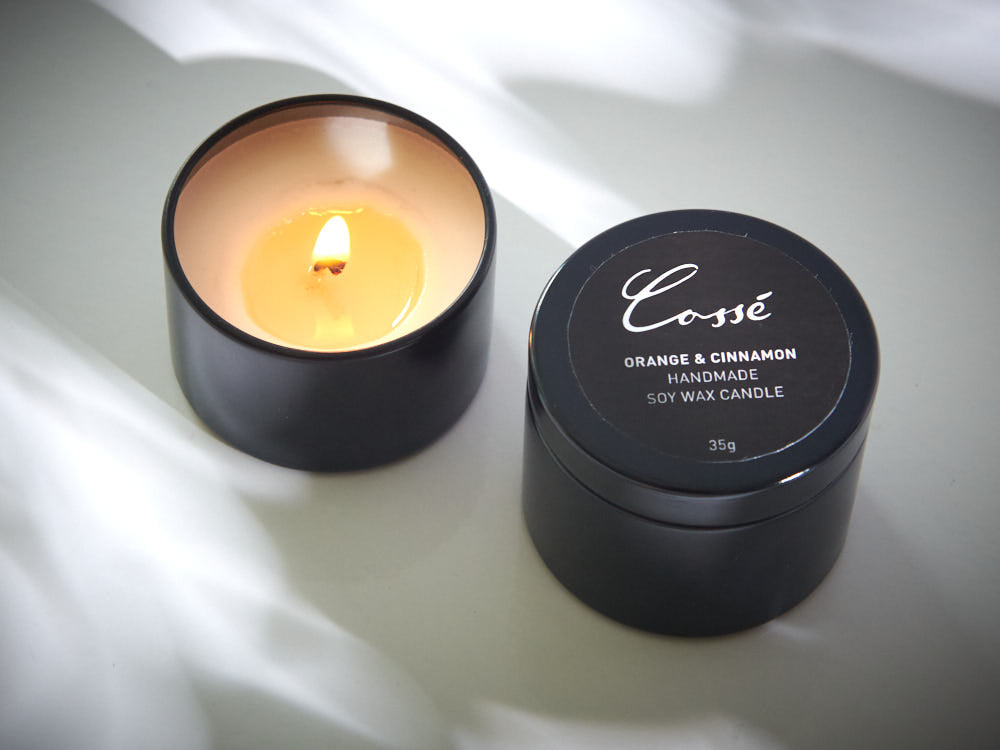Transform Your Home with Eco-Friendly Soy Candles and Home Fragrance
Transform Your Home with Eco-Friendly Soy Candles and Home Fragrance
Blog Article
From Wick to Wax: Comprehending the Chemistry Behind Soy Wax Candles and Their Ecological Impact
As we illuminate our rooms with the cozy radiance of candles, there exists a realm of intricate chemistry behind the apparently simple act of lighting a soy wax candle light. The choice between soy and paraffin wax prolongs beyond plain aesthetic appeals, diving into the world of environmental impact and the very composition of the materials. Understanding the molecular structure of soy wax and its combustion process sheds light on the emissions released right into our surroundings. Join us as we unwind the scientific intricacies behind soy wax candle lights and explore their effects on our atmosphere.
Soy Wax Vs. Paraffin Wax
When contrasting soy wax and paraffin wax for candle light production, it is necessary to comprehend the distinct qualities and advantages of each material. Soy wax is an all-natural, renewable energy originated from soybean oil, making it naturally degradable and environmentally friendly - soy candles. On the other hand, paraffin wax is a result of petroleum refining, which raises worries regarding its ecological impact and sustainability
Soy wax candles shed cleaner and give off less soot compared to paraffin wax candle lights, making them a healthier choice for indoor air high quality. In addition, soy wax has a reduced melting factor, enabling for a longer-lasting candle light that distributes fragrance better. Paraffin wax, on the various other hand, has a tendency to melt faster and much less easily, possibly launching damaging chemicals right into the air.
From a sustainability point of view, soy wax is favored for its biodegradability and eco-friendly sourcing, aligning with the growing consumer choice for environmentally conscious items. While paraffin wax has been a conventional option in candle making because of its price and ease of use, the shift towards environment-friendly options like soy wax is getting energy in the market.
Chemical Make-up of Soy Wax

Combustion Process in Soy Candles
The chemical composition of soy wax directly affects the combustion process in soy candle lights, impacting elements such as melt time, aroma launch, and ecological effect. When a soy candle is lit, the warm from the fire melts the wax near the wick. This liquid wax is after that attracted up the wick due to capillary action. As the fluid wax gets to the fire, it vaporizes and undertakes combustion. The burning procedure entails the vaporized hydrocarbons in the wax reacting with oxygen in the air to generate warm, light, water vapor, and co2.
The burning efficiency of soy candle lights is influenced by the pureness of the soy wax and the quality of the wick. A clean-burning soy candle light with an effectively sized wick will produce a stable flame and reduce soot development. This not only expands important source the melt time of the candle light but also improves the launch of scents. Furthermore, soy wax candles have a reduced environmental impact compared to see this site paraffin candle lights because of their naturally degradable and eco-friendly nature.

Environmental Advantages of Soy Wax

Taken into consideration a sustainable choice to typical paraffin wax, soy wax uses significant environmental advantages that make it a prominent choice amongst eco-conscious consumers. One significant benefit of soy wax is its renewable sourcing. Soy wax is stemmed from soybean oil, which is mostly grown in the USA. The cultivation of soybeans aids support regional farmers and decreases the reliance on non-renewable nonrenewable fuel sources made use of in paraffin wax production. Furthermore, soy wax is eco-friendly, implying it damages down normally without launching harmful toxic substances right into the environment. This particular makes soy wax candles a more eco-friendly choice compared to paraffin wax candles, which are made from oil, a non-renewable resource. Additionally, soy wax burns cleaner and check over here creates much less soot than paraffin wax, adding to better indoor air top quality and minimizing the need for cleaning and maintenance. In general, the environmental benefits of soy wax straighten with the expanding need for environment-friendly and sustainable products out there.
Recycling and Disposal Considerations
Reusing and correct disposal of soy wax candles play a vital function in keeping ecological sustainability and reducing waste in homes and neighborhoods. When it concerns reusing soy wax candles, the initial step is to ensure that the candle has shed completely. This can be achieved by allowing the candle to melt till the wick is no more useful, and after that allowing the staying wax cool and strengthen. Once the wax has strengthened, it can be carefully removed from the container.

In terms of disposal, if recycling is not a choice, soy wax candles are eco-friendly and can be safely thrown away in a lot of home waste systems. It is always suggested to examine with local reusing facilities or waste administration solutions for specific guidelines on candle disposal to make certain proper handling and environmental security.
Verdict
To conclude, the chemistry behind soy wax candles exposes their ecological advantages over paraffin wax candle lights. Soy wax, stemmed from soybean oil, burns cleaner and creates less residue when contrasted to paraffin wax. The burning procedure in soy candles is extra effective, leading to a longer and a lot more also melt. In addition, soy wax is eco-friendly and naturally degradable, making it a much more sustainable choice for candle light manufacturing. Reusing and appropriate disposal of soy wax candles further add to their environmental impact.
When comparing soy wax and paraffin wax for candle light production, it is vital to recognize the unique characteristics and benefits of each product (candles).Soy wax candles melt cleaner and release less residue contrasted to paraffin wax candles, making them a much healthier option for indoor air high quality.Considered a sustainable alternative to conventional paraffin wax, soy wax uses notable environmental benefits that make it a prominent selection amongst eco-conscious customers. Soy wax burns cleaner and generates much less soot than paraffin wax, contributing to better interior air high quality and decreasing the need for cleaning and upkeep.In conclusion, the chemistry behind soy wax candles exposes their environmental advantages over paraffin wax candles
Report this page